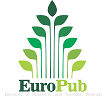The meaning of life and suffering
A personal task
Abstract
The vulnerability of the human condition expressed in pain, disease and death puts man before the questions of the meaning of life and suffering.
The article focuses its interest on the human capacity to give meaning to all situations in life, including that of inevitable suffering. In addition, it proposes some means or educational suggestions to better face these extreme situations of existence: Discover the personal mission of life; develop the virtues of magnanimity, humility and strength; and finally, live life as a gift and service. It is concluded that filling life with meaning through love and virtue allows suffering to be more easily integrated into life and transformed into an occasion for human growth and personal maturity.
Downloads
References
Barrio, J. M. (2005). Trato ético con las personas ancianas. Cuadernos de Bioética, 16(1), 53-64. https://www.redalyc.org/pdf/875/87512676004.pdf
Chochinov, H. M. (2002). Dignity-conserving care—a new model for palliative care: helping the patient feel valued, The Journal of the American Medical Association JAMA, 287(17), 2253-2260.
Cicirelli, V. G. (2011). Religious and nonreligious spirituality in relation to death acceptance or rejection. Death Studies, 35(2), 124-146. https://www.tandfonline.com/doi/abs/10.1080/07481187.2011.535383
Congregación para la Doctrina de la Fe (2020). Carta Samaritanus bonus sobre el cuidado de las personas en las fases críticas y terminales de la vida. https://press.vatican.va/content/salastampa/es/bollettino/pubblico/2020/09/22/carta.html
Cutillas, R., Sanz, P., Mora, M., & Marti, R. (2008). Insensibilidad congénita al dolor: abordaje rehabilitador. Rehabilitación, 48(01), 44-47.
Frankl, V. (2001). Ante el vacío existencial. Barcelona. Herder.
Frankl, V. (2004). El hombre en busca de sentido. Barcelona. Herder.
García, E. (2017). El despertar de la compasión. El cuidado ético de los enfermos graves. EUNSA.
García-Alandete, J., Gallego-Pérez, J., & Pérez-Delgado, E. Pontificia. (2009). Sentido de la vida y desesperanza: un estudio empírico. Universitas Psychologica, 8(2), 447-454. https://www.redalyc.org/articulo.oa?id=64712165013
Harvard, A. (2017). Liderazgo virtuoso. Ediciones Palabra.
Havard, A. (2019a). Creados para la grandeza. Eunsa.
Havard, A. (2019b). Del temperamento al carácter. Cómo convertirse en un líder virtuoso. Eunsa.
Hernández, G., & Jouve de la Barreda, N. (2020). ¿La eutanasia como opción ante el sufrimiento? Una mirada desde la Psiquiatría. Apuntes De Bioética, 3(1), 33-46. https://doi.org/10.35383/apuntes.v3i1.386
Hervás, G. (2011). Psicopatología de la regulación emocional: El papel de los déficit emocionales en los trastornos clínicos. Behavioral Psychology / Psicología Conductual, 19(2), 347-372.
Juan Pablo II (2000). Hombre y mujer lo creó. Ediciones Cristiandad.
Kluber-Ross, E. & Kessler, D. (2005). Sobre el duelo y el dolor. Luciérnaga.
Lewis, C.S. (1994). El problema del dolor. Rialp.
Marín-Porgueres, F. (2007). En torno de la virtud de la magnanimidad. Studia Moralia, 45(2), 1-13.
National Comprehensive Cancer Network. (2003). Distress management. Clinical practice guidelines. Journal of the National Comprehensive Cancer Network: JNCCN, 1(3), 344-374. doi: 10.6004/jnccn.2003.0031
Noriega, D. (05 de marzo 2019). El silencio sobre el suicidio perpetúa la primera causa de muerte no natural en España. El Diario.es. https://www.eldiario.es/sociedad/perpetua-primera-espana-hablar-suicidios_1_1668197.html
Onaka, J. (2020). Reflexiones sobre la muerte a propósito de la pandemia. Apuntes De Bioética, 3(1), 133-142. https://doi.org/10.35383/apuntes.v3i1.369
Organización Mundial de la Salud [OMS]. (2019). Cada 40 segundos se suicida una persona: Organización Mundial de la Salud. https://www.who.int/es/news-room/detail/09-09-2019-suicide-one-person-dies-every-40-seconds
Payán, E. C., Vinaccia, S., & Quiceno, J. M. (2011). Cognición hacia la enfermedad, bienestar espiritual y calidad de vida en pacientes con cáncer en estado terminal. Acta Colombiana de Psicología, 14(2), 79-89. https://www.redalyc.org/pdf/798/79822611008.pdf
Pieper, J. (2003). Las virtudes fundamentales. Rialp.
Ray, R.D. & Zald, D.H. (2012). Anatomical insights into the interaction of emotion and cognition in the prefrontal cortex. Neuroscience & Biobehavioral Reviews, 36, 479–501. https://doi.org/10.1016/j.neubiorev.2011.08.005
Swindoll, C. (2007). Más de 1001 ilustraciones y citas de Swindoll. Thomas Nelson
Yepes, R. & Aranguren, J. (2001). Fundamento de Antropología: Un ideal de la excelencia humana. Eunsa.
The authors retain copyright.
This work is under international license Creative Commons Attribution 4.0.
The articles published by the scientific journal "Notes on Bioethics" of the Universidad Catolica Santo Toribio de Mogrovejo, Chiclayo Peru, can be shared through the international public license Creative Commons Attribution CC BY 4.0
























 LIBRARY USAT
LIBRARY USAT